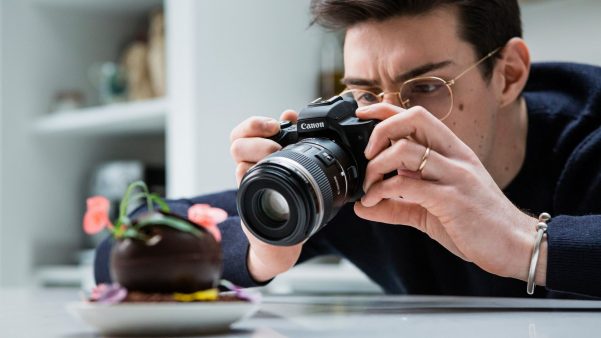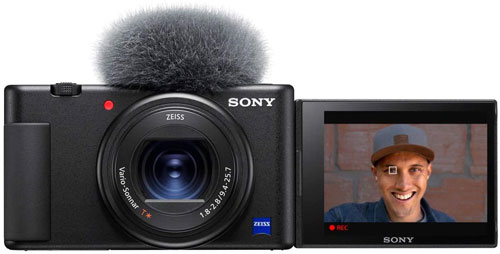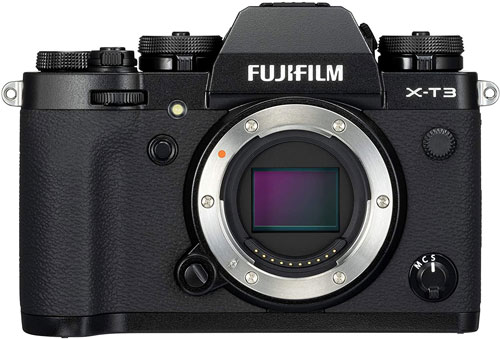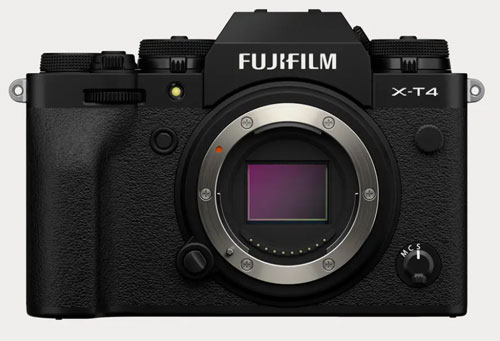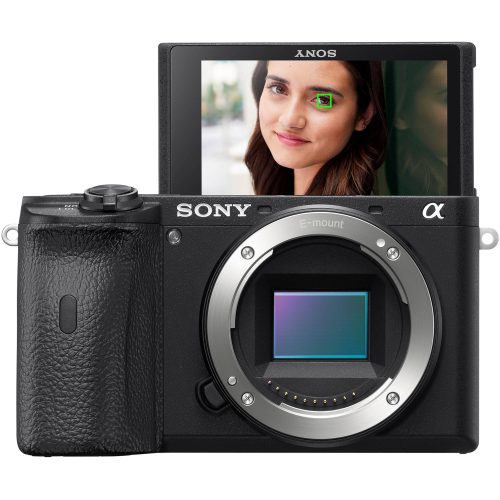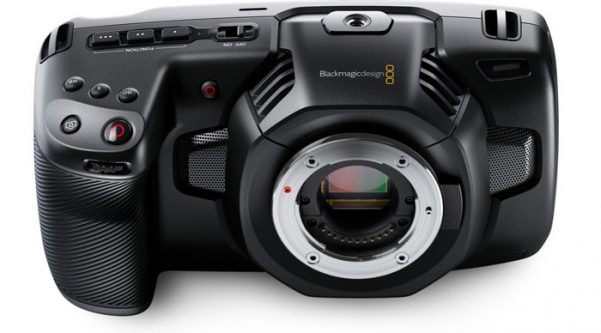9 Best Entry Level Video Cameras for 2021
If you are new to filmmaking or shooting video and need a camera to get started, this is the article for you. Ideally, entry level video cameras should be easy to use and come at a price that’s well below professional cinema cameras. Plus, you don’t just want cheap, you want the best value for your money.
Consumer and prosumer camcorders used to be the first choice for entry level filmmakers. But these days, affordable smartphones, DSLRs and mirrorless cameras are opening up professional videography to a much larger crowd.
Video Output
The camera may output 4K resolution, but the kind of file output makes a difference to what you can do with the video afterwards. For example, the MP4 video file produced by most low budget cameras is a compressed format designed for low bandwidth delivery. These files are usually created using 4:2:0 chroma subsampling, which discards 3/4 of the colour information to reduce file sizes.
And this is one reason why you might want to shoot at 4K resolution, even if you intend to master the video at 1080 HD. If you shoot 4K and “down res” to 1080 HD, your final 1080 HD video should contain more colour information than if simply shot at 1080 HD. Bear in mind, higher video resolutions demand more processing power when editing and grading.
4K Resolution
Personally, in 2021, I wouldn’t consider buying a video camera that doesn’t shoot 4K. Delivering video in FHD (1080p) resolution is pretty much the basic minimum now. And if that is your maximum resolution, you don’t have much room to maneuver.
Shooting in 4K means you can master your video in 1080p and keep the option to reframe the image when editing. 4K footage also allows you to use stabilization software and retain a high quality final image.
60 frames per second
Another bottom line for me, now, is being able to shoot at 60 fps (frames per second), preferably in 4K resolution as well. 60fps slowed to 40% speed on a 24fps timeline is your best option for high quality slow motion B roll.
8-bit or 10-bit
Does the camera produce 8bit or 10bit video? 10bit video contains far more image information than 8bit. However, it will demand greater processing power when editing. Again, higher bitrates produce better quality video at the expense of increased file size and processor demands.
Personally, I can live without 10-bit colour but it’d be nice to have the option.
Summing up, we’re looking for a camera that can shoot 4K resolution at 60fps and 10-bit colour as a bonus.
1. A Smartphone
If you’re just making your first steps as a filmmaker, I really recommend you start with your smartphone. In this article I explain how to learn the basics of any camera using your smartphone and an app like FiLMiC Pro.
They are small, flexible, easy to use and (presuming you already have a smartphone made in the last 3 years) entirely free. You will not need to buy lenses, as you would with a DSLR or mirrorless camera.
Your smartphone can even be used to edit your video, so no need to spend more on an expensive, high-powered laptop and editing software. Editing this way is not ideal, but you can get started today without spending so much as $1.
If you’re looking to create social media content, I can’t imagine why you’d look beyond one of the recent top of the range smartphones. The iPhone 12 Pro Max & Samsung Note 20 Ultra have large sensors which allow a certain amount of blurred background. They also have improving portrait mode, which can fakes it. Plus, rumours say the iPhone 13 will step up the AI-driven, shallow depth of field capabilities even further.
Boxes Ticked
In terms of bottom line, the latest iPhones and Samsung devices tick all 3 boxes – 4K @ 60fps and the option of 10-bit video.
Another advantage to bear in mind is that many dedicated cameras limit the length you can record video clips, while smartphones don’t.
2. Canon EOS M50 Mark II
The Canon M50 Mark II is a good starter camera on a budget, that comes with Canon’s award-winning dual pixel autofocus.. The camera can shoot in 4K video (4:2:0 8-bit) at 24fps. There’s also 60fps at 1080p, then 120 fps at a limited resolution of 720p.
The low weight and flippy screen combo makes the M50 mark II a decent choice for YouTubers and Vloggers. The fact the M50 MII outputs .mp4 files directly means its pretty easy to drop these files right into your editing software and start cutting. On the downside, the 4K video isn’t the best quality, especially as the system crops the image further than with 1080p.
Well, stabilising 4K video is always a challenge for any entry level camera. This is because 1) extra processing power is needed and 2) its harder for a camera system to shift a 4K image around the sensor than a lower resolution one. And truth be said, the Mark II is not much of an upgrade on the original Canon M50.
Canon colour science is very popular. And added to that, the 1080p video works very well with inbuilt stabilisation and autofocus, too. Bear in mind, both models come with a 30 minute recording limit. One advantage the Mark II has over the original is the addition of an (onscreen data free) HDMI output which is great for live streaming. There’s also a new vertical video shooting feature for social media stories.
But you might be better off looking at a refurbished Canon M50 and save a few dollars on the Mark II. Although, if you are starting with nothing, Amazon.com have some tempting bundles for the Mark II with with tons of extras.
Find Canon M50 Mark II on Amazon3. Sony ZV-1
This excellent, affordable camera by Sony is aimed directly at vloggers and YouTubers. The camera shoots fantastic looking 4K video at 24 and 30 frames per second. If you drop down to 1080p resolution you can also shoot 60 and 120 frames per second, which is great for capturing smooth, gliding slow motion shots.
As vloggers are usually filming themselves, there’s a handy flip-out screen for easier focus, exposure and framing. There’s also a number of features aimed at vloggers. For example, there’s a special auto focus (“Product Showcase” Setting) for moving a product close to camera and switching focus.
The Sony ZV-1 carries a 1″ Exmor RS CMOS sensor with 20.1MP and comes equipped with a 24-70mm f1.8-2.8 equivalent lens. The unit comes with inbuilt ND filter, enabling you to work in overly bright conditions. While there are plenty of features for vloggers to get excited about, some have complained that the lens is not quite wide enough.
However, for an entry level camera the quality produced at this price is hard to beat. And if you want a camera that’s ready to go out of the box, then this is definitely worth looking at.
Find Sony ZV-1 on Amazon4. Sony ZV-E10
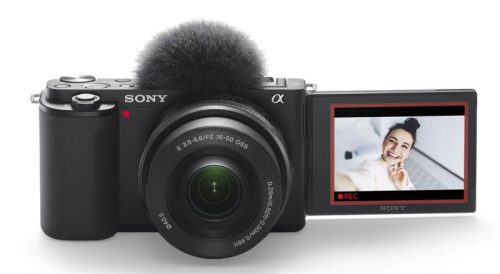
The new Sony ZV-E10 updates the previous vlogger-oriented Sony ZV-1. The major difference is a detachable lens, allowing you to choose the lens that suits you, using the Sony E-mount. The camera can be purchased body only or bundled with the E 16-50mm F3.5-5.6 kit lens.
The ZV-E10 uses an APS-C sensor with 24.2MP compared to the ZV-1, which has a 1-inch sensor with 20.1MP. But sensor size difference provides the ZV-E10 with better dynamic range and low light performance for stills and video. However, the ZV-E10 does not have the inbuilt ND filters like the ZV-1.
The Sony ZV-E10 is a more expensive option as you will have to pay extra for the lens. Meanwhile, there is still no 4K @ 60fps capability and some rolling shutter issues from the larger sensor.
The Sony ZV-E10 will be released in August.
5. Fujifilm X-T3
The Fujifilm X-T3 is a great all round camera which meets our baseline of 4K video at 10bit colour up to 60fps. The camera can also capture the slightly wider (17:9) Cinema 4K format at the same frame rates. While the X-T3 can capture 10-bit video internally, you connect an external recorder to capture video at the higher 4:2:2 chroma subsampling quality.
All this in a camera body which currently costs about the same as the high end flagship smartphones such as the Samsung S20 Ultra. While the camera was released in September 2018, constant firmware updates have steadily improved and refined the X-T3’s performance.
The X-T3 can record up to 400 Mbps bitrate (and bitrate plays an important role on video quality). As a comparison, YouTube recommends 4K video be uploaded at 35–45 Mbps. So the X-T3 gives you plenty of extra bitrate to play with, should you need it.
Find Fujifilm X-T3 on Amazon6. Fujifilm X-T4
With the X-T4 now on the market for a year already, prices for the the X-T3 as an entry level camera are getting better and better. However, you might want to look at the newer Fujifilm X-T4.
The Fujifilm X-T4 now includes in-body stabilisation, while the Fujifilm X-T3 has none. This works on its own or in combination with lenses which carry their own optical stabilisation. The Fujifilm X-T4 also comes with a larger, longer-lasting battery.
The LCD flip-out screen on the Fujifilm X-T4 also has more resolution than the one on the previous version. Both cameras can record 4K up to 60p. You can have 10-bit 4:2:0 for internal recording and 10-bit 4:2:2 via HDMI. Note, the maximum recording time per clip is 20 minutes at 50/60p or 30 minutes up to 30p.
Find Fujifilm X-T4 on Amazon7. Panasonic GH5 II
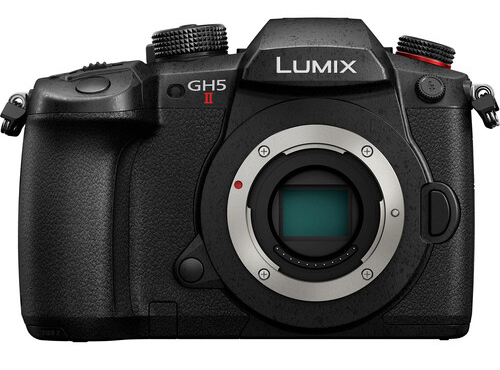 In recent times, camera makers have been trying to design cameras for vloggers and the GH5 II is Panasonic’s best attempt so far. The camera can shoot 4K @ 60fps in 10-bit colour. The GH5 mark II also has excellent face-detection auto focus which is an essential for vloggers. One downside is that the auto focus transition can be a little slow to keep up with changes in subject.
In recent times, camera makers have been trying to design cameras for vloggers and the GH5 II is Panasonic’s best attempt so far. The camera can shoot 4K @ 60fps in 10-bit colour. The GH5 mark II also has excellent face-detection auto focus which is an essential for vloggers. One downside is that the auto focus transition can be a little slow to keep up with changes in subject.
The mark II version of the GH5 comes with a number of improvements over the previous version:
GH5 II vs GH5:
- 4K video up to 60fps, 10bit internal / external
- Simultaneous internal/external recording
- Live streaming function
- Wireless live streaming
- V-Log L pre-installed (12 stops of Dynamic Range)
- 6K-A 4:3 Anamorphic shooting
- Red frame indicator
- Up to 180fps Full HD video
- Vertical video support
- USB-PD power delivery support with USB C connection
The Panasonic GH5 II is a top entry level camera (although not the cheapest) which is going to be “future proof” for a couple of years and great allrounder.
Find GH5 II on AmazonIf the GH5 II is out of your price range for an entry level camera, check out my previous article on entry level cameras. The G7 and G85 are still great entry level cameras.
8. Sony Alpha a6600
The Sony Alpha a6600 is another camera created with the vlogger in mind. The camera has IBIS (inbuilt image stabilisation), eye detection auto focus and a flip-out screen so you can film yourself easier. The a6600 can shoot 4K but only up to 30fps. There’s up to 120fps, but only at 1080p (FullHD) resolution.
So this is a model which will suit talking to camera and traditional filmmaking but lacks that 4K @ 60fps for top quality slow motion B roll. Note that the Sony Alpha a6600 has no recording limit, so if you’re looking to shoot long takes this could be the camera for you.
The a6600 also comes with a robust, magnesium alloy body that is dust and moisture-resistant enabling it to handle different environments. Something to consider if you are a travel vlogger, for example.
But if the a6600 is out of your budget range then check out the previous version, the a6400.
Find Sony Alpha a6600 on Amazon9. BLACKMAGIC DESIGN POCKET CINEMA CAMERA 4K
Blackmagic have become the favourite camera maker of student and low budget filmmakers. While their higher spec cameras can set you back $6000 or more, the Pocket Cinema 4K is a fraction of that. So this truly is an entry level Blackmagic camera.
The camera is built around the Micro Four Thirds system and uses a similar sensor to the Panasonic Lumix GH5S. The Pocket Cinema 4K (there’s also a more expensive 6K version) can record 10-bit Apple ProRes and even the highly versatile 12-bit Blackmagic RAW. So you’re getting a much more professional grade file, compared to the 4:2:0 chroma subsampled compressed formats other entry level video cameras use.
To deal with the resulting larger file sizes, you have the option to record directly to an external solid-state drive (SSD) over USB 3. But this camera is definitely aimed at filmmakers and does not provide the convenience you might desire as a vlogger or YouTuber. For example, not great autofocus, no tracking autofocus, no in-camera stabilisation and a battery that only lasts 30 minutes.
Bear in mind that most high performing cinema cameras generally start at $15K. So this is certainly a camera more aimed at those filming with at least a small crew rather than solo shooters. Plus, most users add considerable amounts of extra kit to get things working the way they want.
But if you’re considering shooting high level projects, then this could be the entry level camera for you.
Find Blackmagic Pocket Cinema 4K on AmazonSmartphone Video – Beginner to Advanced
If you want to know more about smartphone filmmaking, my book Smartphone Videography – Beginners to Advanced is now available to download for members on Patreon. The book is 170 pages long and covers essential smartphone filmmaking topics:
Things like how to get the perfect exposure, when to use manual control, which codecs to use, HDR, how to use frame rates, lenses, shot types, stabilisation and much more. There’s also my Exploring the Film Look Guide as well as Smartphone Colour Grading.
Members can also access all 5 episodes of our smartphone shot Silent Eye series, with accompanying screenplays and making of podcasts. There’s other materials too and I will be adding more in the future.
If you want to join me there, follow this link.
Simon Horrocks
Simon Horrocks is a screenwriter & filmmaker. His debut feature THIRD CONTACT was shot on a consumer camcorder and premiered at the BFI IMAX in 2013. His shot-on-smartphones sci-fi series SILENT EYE featured on Amazon Prime. He now runs a popular Patreon page which offers online courses for beginners, customised tips and more: www.patreon.com/SilentEye


